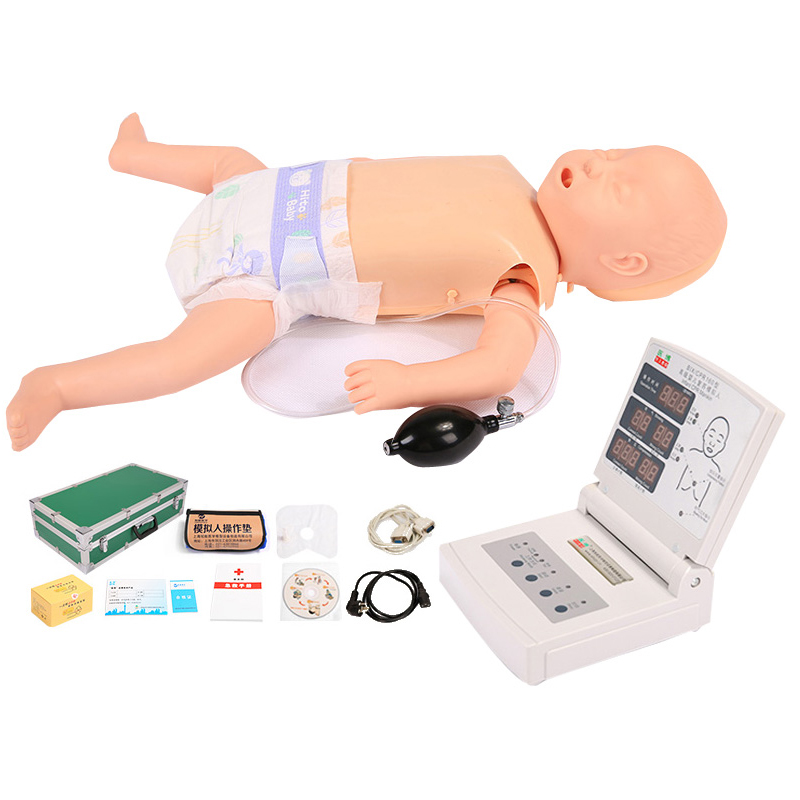Neonatal asphyxia resuscitation simulation is a crucial part of medical training, which aims to improve the emergency handling ability and operation skills of medical staff by simulating the real neonatal asphyxia scenario. In terms of technical details and operational difficulties, it can be summarized as follows:

Technical details
Simulation equipment selection: The selection of appropriate simulation equipment is the basis of simulation training. The neonatal comprehensive first aid model should be able to simulate various physiological reactions and pathological states of newborns, including changes in heart rate, breathing, skin color, etc., in order to provide a real operating environment for medical staff.
Simulation of resuscitation process: Simulation training should be conducted in strict accordance with the standard process of resuscitation of neonatal asphyxia, including initial assessment, airway opening, positive pressure ventilation, chest compression, drug therapy and other steps. Each step needs to be carefully simulated to ensure that the medical staff can master the resuscitation process.
Real-time feedback systems: Advanced analog devices are often equipped with real-time feedback systems that can evaluate the effectiveness of the medical personnel in real time and provide suggestions for improvement. This helps the medical staff to correct errors in time and improve the level of operation.
Operation difficulty
Time urgency: Neonatal asphyxia resuscitation is a race against the clock process, each step of the operation needs to be completed in a very short time. Therefore, medical personnel need to develop the ability of quick response and decisive decision making in simulation training.
Technical accuracy: Every step of the resuscitation process needs to be accurate, such as the Angle of airway opening, the pressure of positive ventilation, and the depth and frequency of chest compressions. All these need medical staff to practice repeatedly in simulation training to reach the level of proficiency.
Teamwork: Resuscitation of neonatal asphyxia is a teamwork process that requires close cooperation between multiple roles such as doctors and nurses. In the simulation training, it is necessary to pay attention to cultivating the teamwork ability of medical personnel to ensure that an effective rescue team can be formed quickly in the real scene.
Psychological resistance to pressure: Simulation training also needs to pay attention to the psychological resistance to pressure of medical staff. During the stressful recovery process, medical staff need to remain calm and calm to deal with various emergencies. Therefore, the psychological quality of medical staff can be exercised by setting different emergency situations in simulation training.
To sum up, neonatal asphyxia resuscitation simulation requires a lot of efforts and practice from medical staff in terms of technical details and operational difficulties. Through continuous simulation training and reflection summary, medical staff can gradually improve their resuscitation skills and coping ability, and provide safer and more effective treatment services for newborns.
